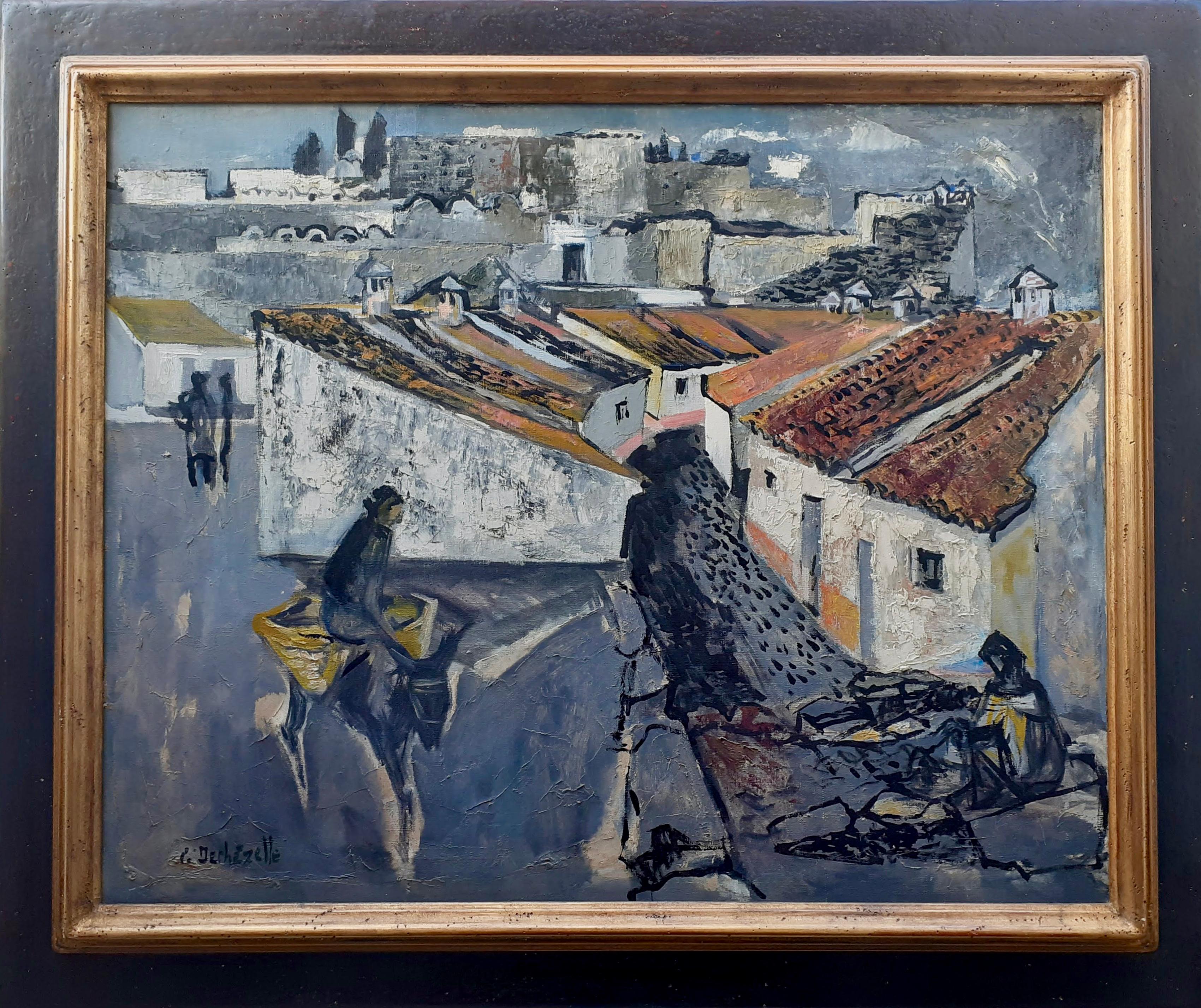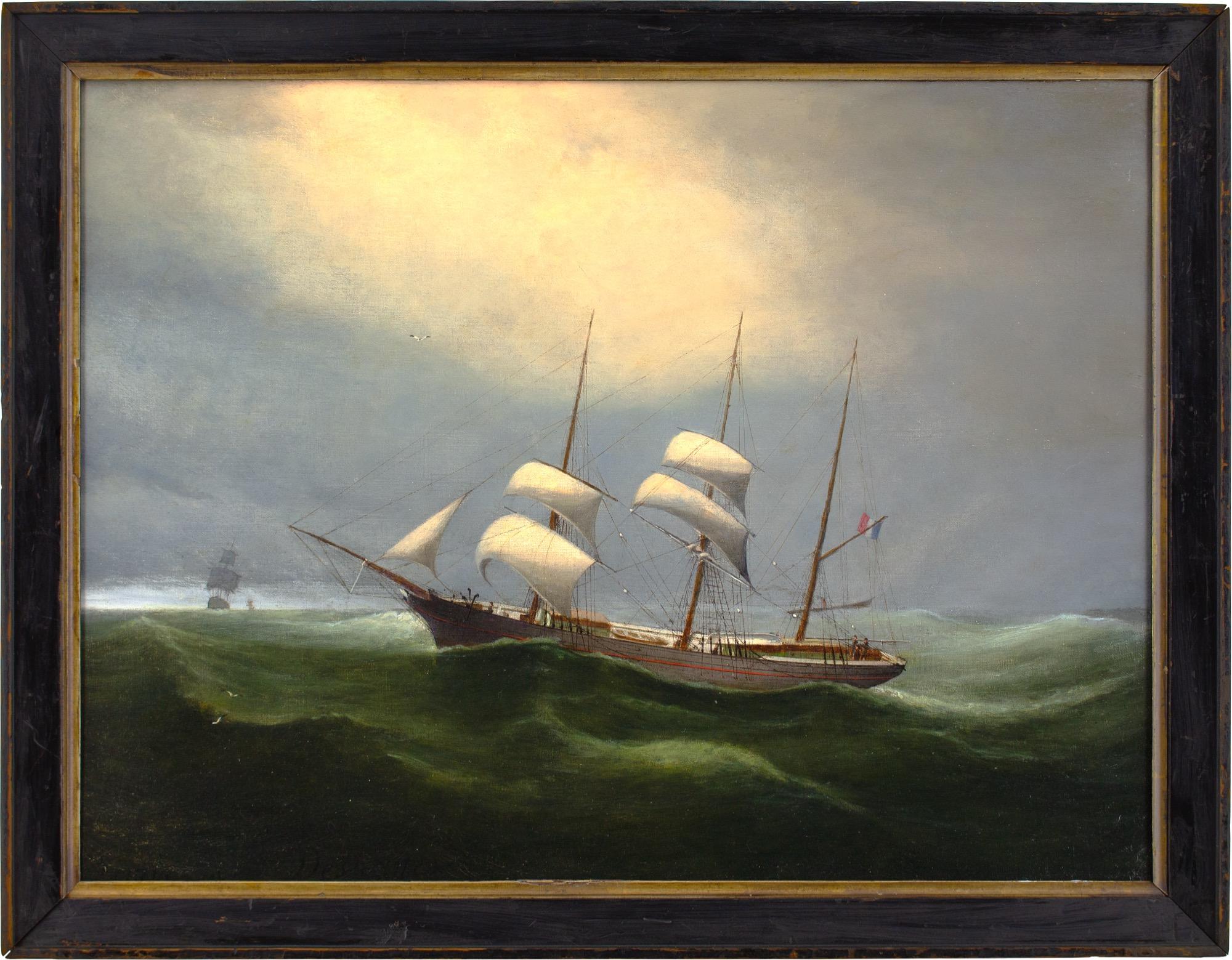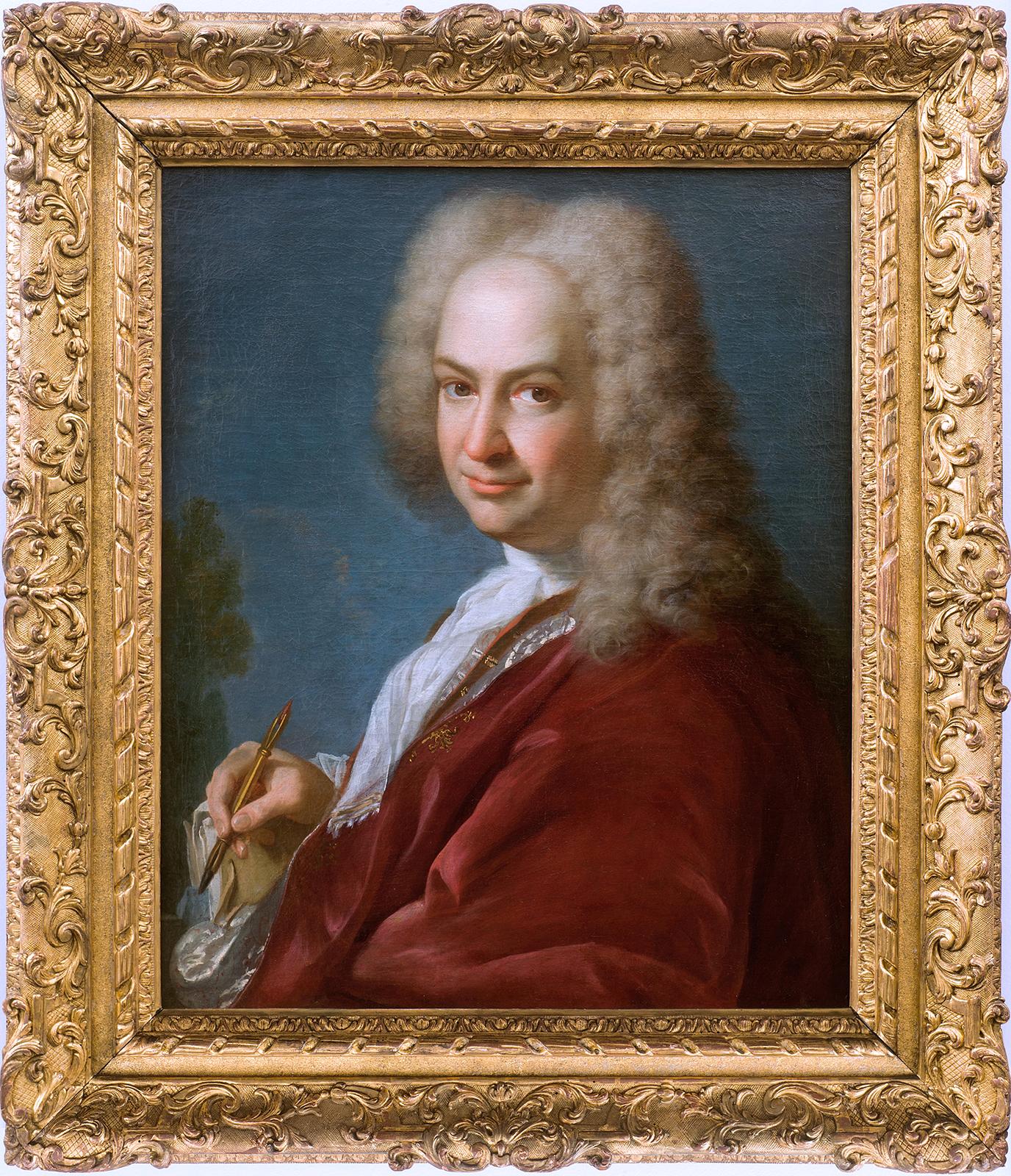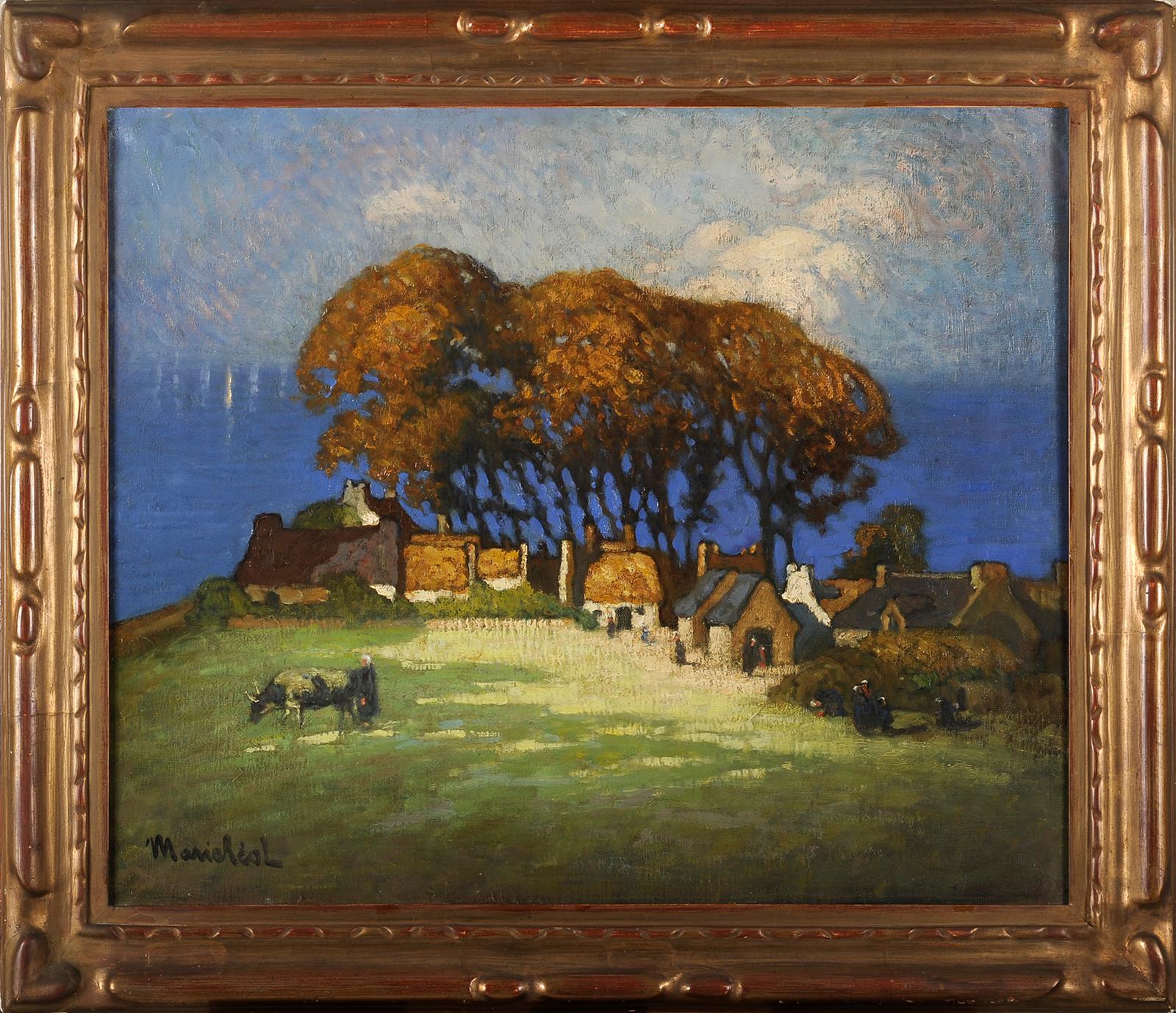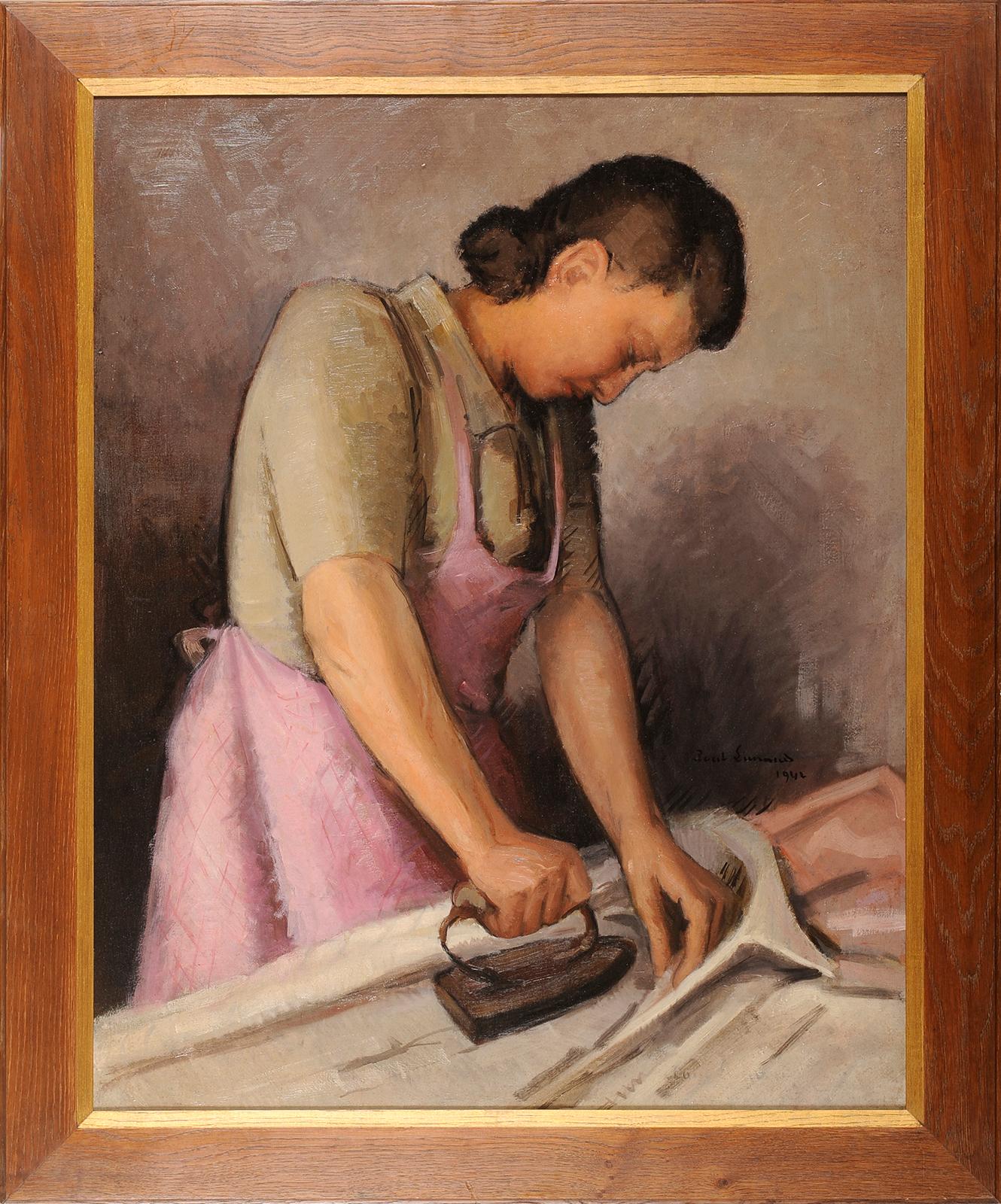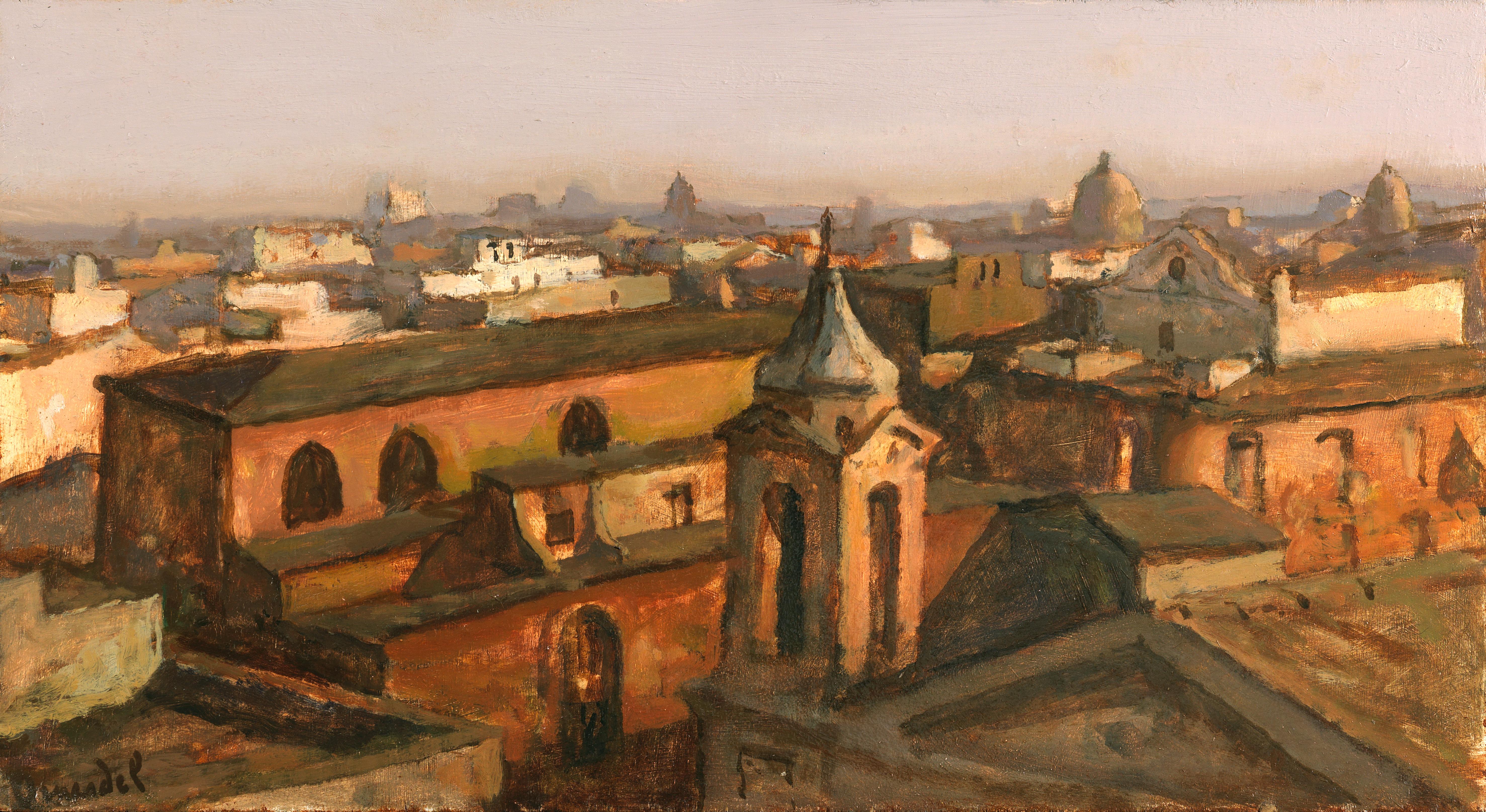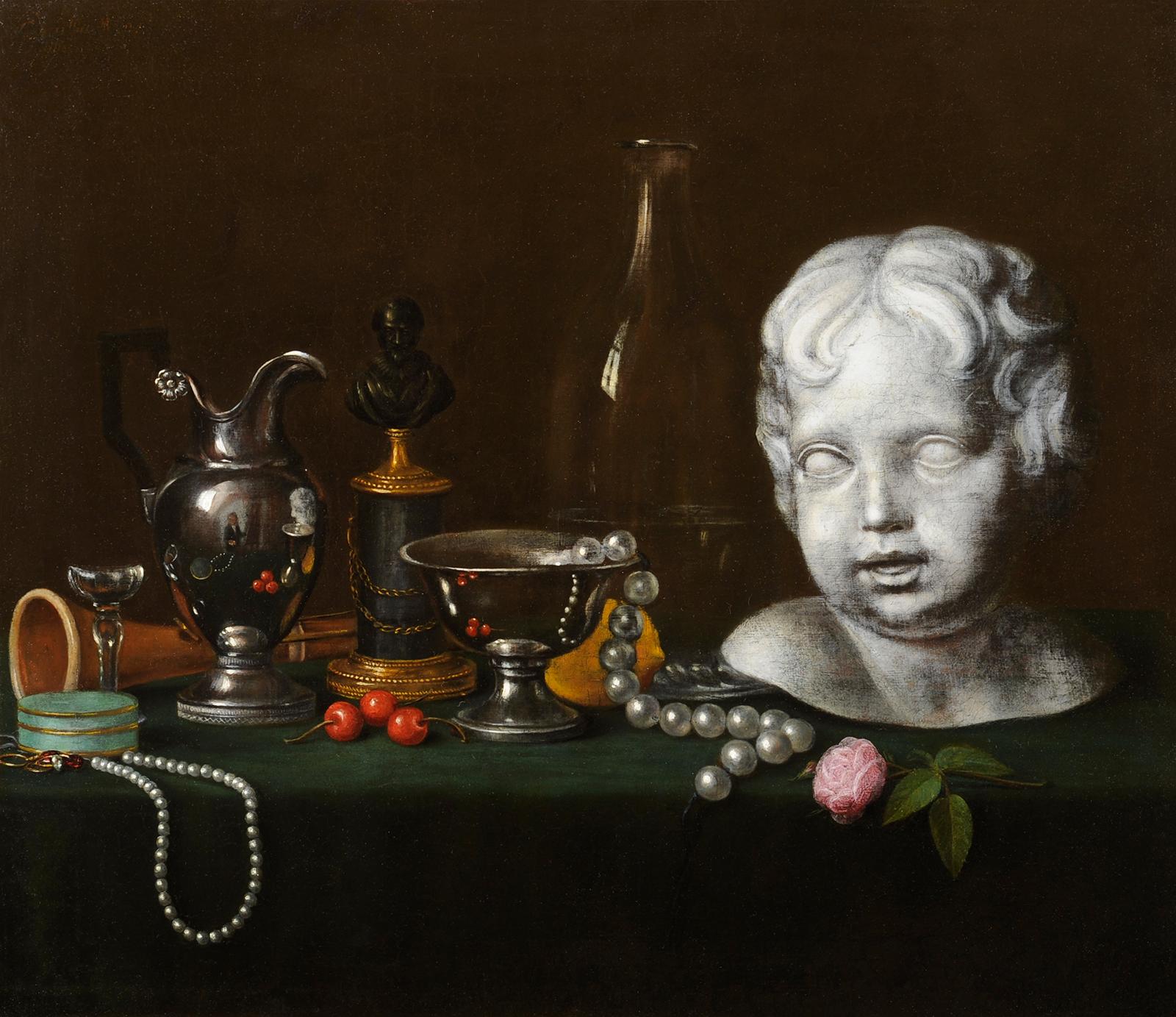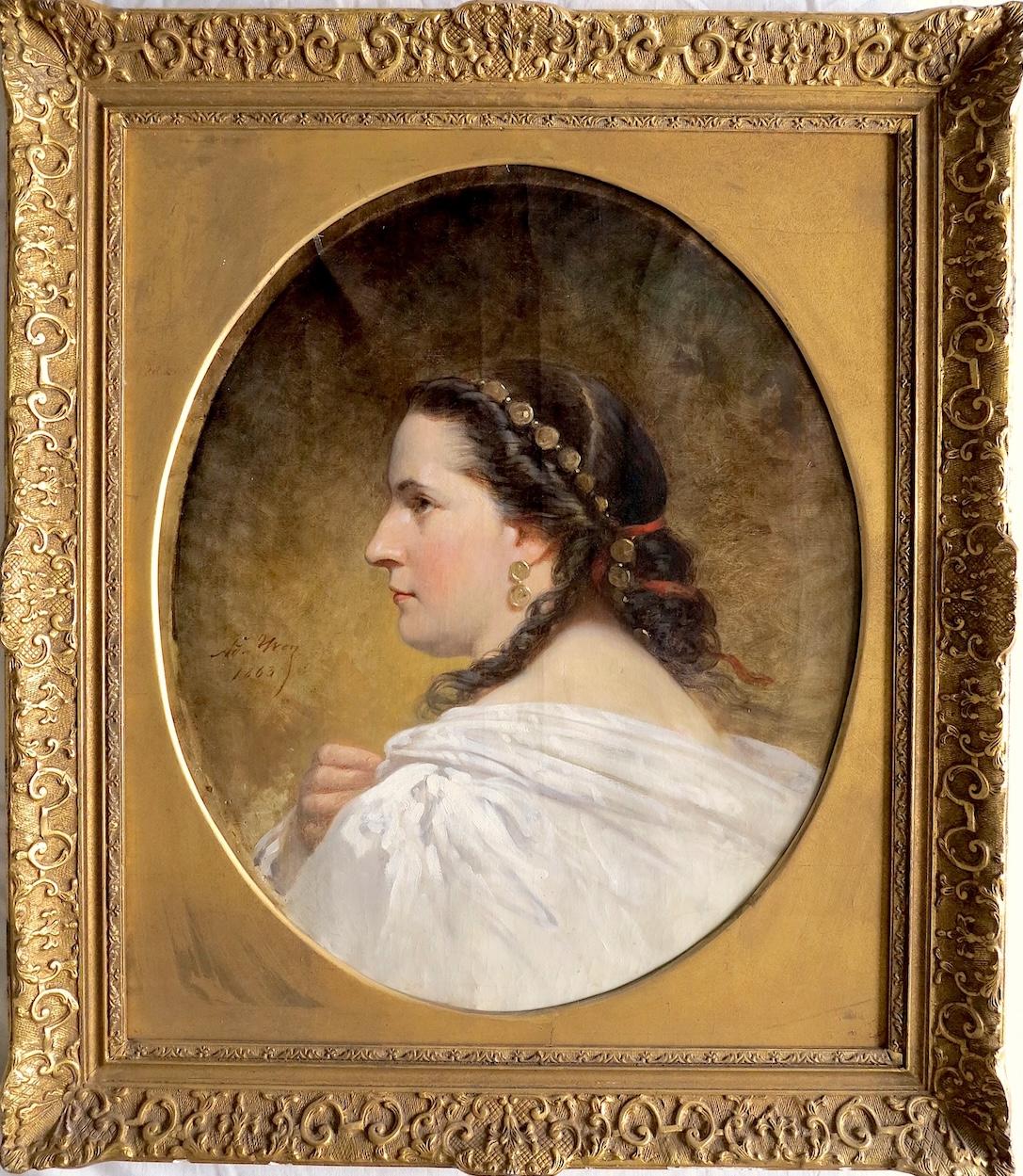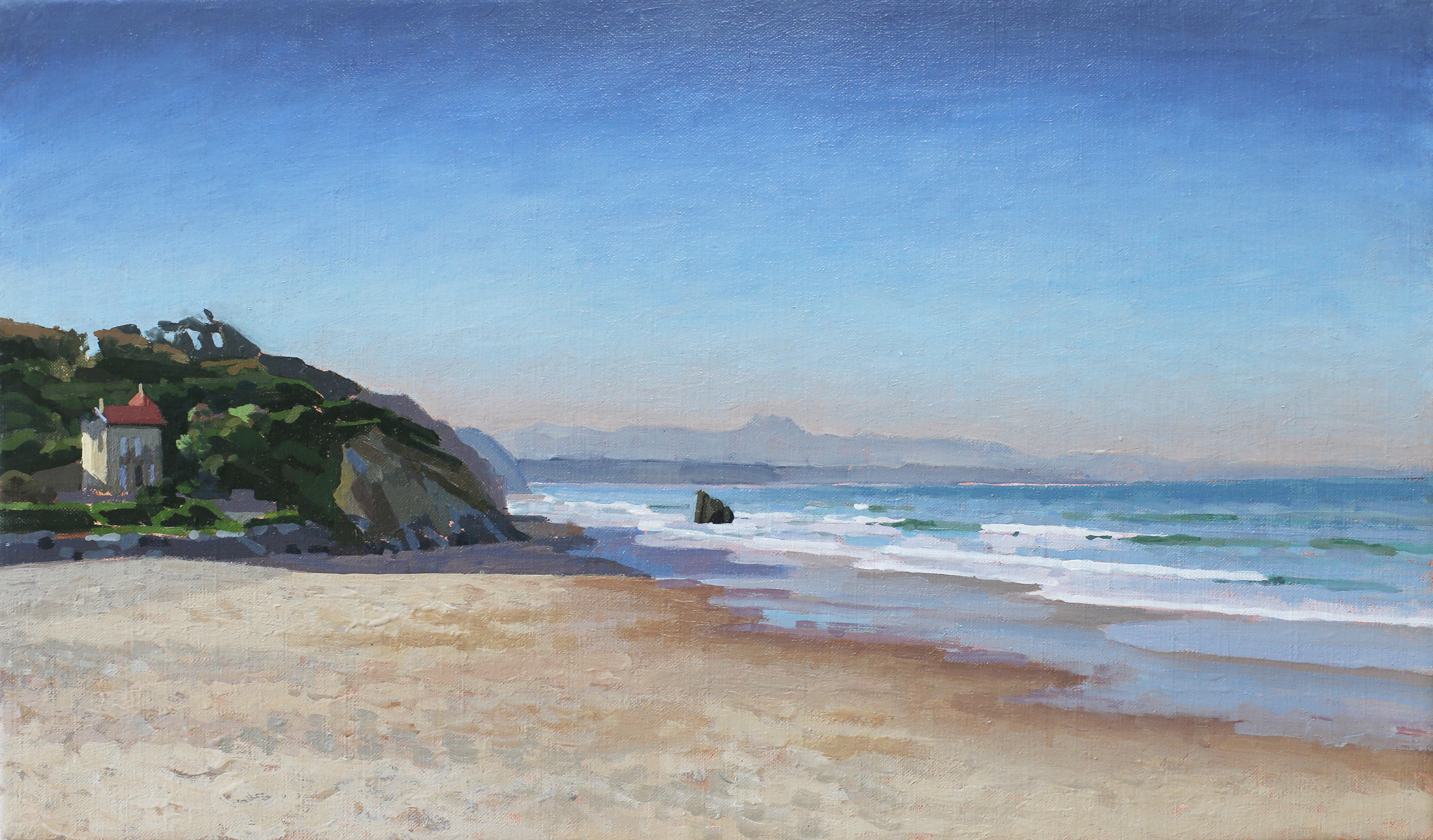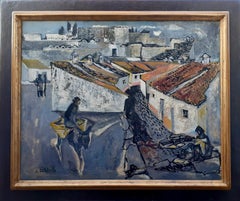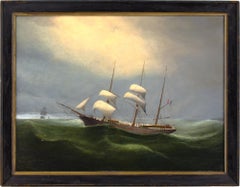Large Erotica Miniature Painted on Ivory in Gilded Frame Louis XVI Style
View Similar Items
Want more images or videos?
Request additional images or videos from the seller
1 of 8
UnknownLarge Erotica Miniature Painted on Ivory in Gilded Frame Louis XVI Stylecirca 1860s
circa 1860s
About the Item
- Creation Year:circa 1860s
- Dimensions:Height: 7.68 in (19.5 cm)Width: 6.7 in (17 cm)Depth: 3.15 in (8 cm)
- More Editions & Sizes:placca cm 11 x 8Price: $861
- Medium:
- Movement & Style:
- Period:
- Condition:
- Gallery Location:Pistoia, IT
- Reference Number:1stDibs: LU2746215123182
About the Seller
4.5
Gold Seller
Premium sellers maintaining a 4.3+ rating and 24-hour response times
Established in 1997
1stDibs seller since 2024
11 sales on 1stDibs
Authenticity Guarantee
In the unlikely event there’s an issue with an item’s authenticity, contact us within 1 year for a full refund. DetailsMoney-Back Guarantee
If your item is not as described, is damaged in transit, or does not arrive, contact us within 7 days for a full refund. Details24-Hour Cancellation
You have a 24-hour grace period in which to reconsider your purchase, with no questions asked.Vetted Professional Sellers
Our world-class sellers must adhere to strict standards for service and quality, maintaining the integrity of our listings.Price-Match Guarantee
If you find that a seller listed the same item for a lower price elsewhere, we’ll match it.Trusted Global Delivery
Our best-in-class carrier network provides specialized shipping options worldwide, including custom delivery.More From This Seller
View AllVenetian-Cretan master early 16th century Tempera on Gold Background
Located in Pistoia, IT
Venetian-Cretan master of the early 16th century, icon of Christ the Bridegroom (or Nymphios).
Tempera on gold ground on panel.
Measure 41 x 29 cm
Holy Week, in Eastern tradition an...
Category
16th Century Renaissance Figurative Paintings
Materials
Tempera, Board
$2,386 Sale Price
20% Off
Free Shipping
"Nymphs in the Forest" Oil on Canvas Signed in Gilded Frame
By Narcisse Virgilio Díaz de la Peña
Located in Pistoia, IT
Narcisse Díaz de la Peña, "Nymphs in the Forest. Oil on canvas signed "Diaz" at lower left. In its original gilded wooden frame bearing the name "Diaz 1807-1876" on brass plate.
Nar...
Category
1850s Barbizon School Figurative Paintings
Materials
Oil
"The Kiss" Oil on Canvas French Art Nouveau School circle of T. Steinlen
Located in Pistoia, IT
"The Kiss," oil on canvas, French Art Nouveau school of the late 19th century, follower of Théophile Alexander Steinlen.
Extremely modern and striking painting, in which the painter ...
Category
Early 20th Century Art Nouveau Figurative Paintings
Materials
Canvas, Oil
"Painter at Easel" French School Postimpressionist Oil on Canvas Frame
Located in Pistoia, IT
Joseph Louis François Lépine (1867-1943) "Painter at the easel." Oil painting on canvas applied to cardboard signed lower left. Early 20th century French postimpressionist school.
Joseph Lépine...
Category
Early 20th Century Post-Impressionist Figurative Paintings
Materials
Oil
Venetian School 18th century Preparatory sketch "Martyrdom of St. Lawrence"
Located in Pistoia, IT
Fascinating preparatory sketch, oil on walnut wood, depicting "The Martyrdom of St. Lawrence," Venetian school, 18th century. Very good condition.
Measurements 13 x 11 cm
Category
18th Century Baroque Figurative Paintings
Materials
Oil
"At the Café" Signed Oil Painting Moroccan Painting The Picasso of Tangier
Located in Pistoia, IT
Antonio Fuentes (Tangier 1905 - 1995) "At the Cafe. Oil on panel signed at lower left.
Also known as "The Master of Tangier" or "the Picasso of Tangier," Fuentes traversed the 20th...
Category
20th Century Modern Figurative Paintings
Materials
Oil
You May Also Like
Large mid century modern abstracted cityscape painting southern landscape
By Claude Dechezelle
Located in Norwich, GB
A major, mid century modern work by French artist Claude Dechezelle (1928-2003). Having studied with the art deco painter and designer Jean Dupas at ...
Category
Mid-20th Century French School Landscape Paintings
Materials
Canvas, Oil
Antique French Oil Painting Claude Rouget de LiIsle Singing "La Marseillaise"
By Isidore Alexandre Augustin Pils
Located in Portland, OR
A fine antique French oil painting on canvas by Isidore Alexandre Augustin Pils (1815–1875), the painting depicting Claude Joseph Rouget de Lisle (1760-1836) singing "La Marseillaise", circa 1849.
Isidore Pils was an academic painter, very often painting military subjects. Claude Rouget de Lisle was a French army officer from the French Revolutionary Wars and famously wrote the words to "La Marseillaise" and first performed it to the Mayor of Strasbourg; Baron Philippe-Frederic de Dietrich. This painting dates to the middle of the 19th century and could be by the hand of Pils or possibly a talented copyist who was also a classically trained artist.
The painting is in excellent condition and is housed in a gilded frame.
Isidore Pils produced a number of paintings with this famous scene and one such painting is housed in the collection of The Louvre in Paris.
At sight without frame 26.50" x 22"
Pils was born in Paris as the son of a soldier François Pils. At the age of twelve, he studied with Guillaume Guillon-Lethière for four years.
In 1831 he became a student at the École des Beaux-Arts and studied under François-Édouard Picot. He competed for the Prix de Rome, which he won in 1838 for a history painting, St. Peter Healing a Lame Man at the Door of the Temple. Although in poor health, Pils then spent the customary three years at the French Academy in Rome at the Villa Medici, which then had Jean Auguste Dominique Ingres as its director. While in Italy he visited Naples, Venice, and Florence.
Pils's earlier paintings have religious themes. In 1849 he completed his most famous work, Rouget de L'Isle Singing La Marseillaise, which now resides at the Musée historique de Strasbourg. After experiences travelling with French troops through the Crimea, his themes took on military and nationalistic subjects. He later produced many military scenes during the siege of Paris during the Franco-Prussian War of 1870.
Pils was appointed professor of painting at the École des Beaux-Arts in 1863 but left the same year for two years in Algeria. In 1868 he was elected to seat #14 of the Académie des Beaux-Arts. Among his students were Adrien Moreau, Paul Adolphe Rajon, Julien Dupré, Luc-Olivier Merson, Ludovic Piette...
Category
1840s French School Figurative Paintings
Materials
Oil, Canvas
Marie-Edouard Adam (Circle), The Barque ‘Limbe’ In Choppy Waters
Located in Cheltenham, GB
This late 19th-century French oil painting depicts the barque Limbe in choppy waters, with the silhouettes of two further ships beyond. It was probably produced at Le Havre, France, ...
Category
1870s French School Landscape Paintings
Materials
Canvas, Oil
View taken near Ajaccio, Corsica - France
Located in Paris, IDF
Charles Louis Émilien DESPREZ
(Maisons-Alfort, 1818 – Paris, 1898)
View taken near Ajaccio
Oil on paper mounted on canvas
Signed below, located and dated lower right
34 x 53 cm wit...
Category
Mid-19th Century French School Landscape Paintings
Materials
Oil
Presumed artist self-portrait
Located in BELEYMAS, FR
Louis-Gabriel BLANCHET
(Versailles, 1701 – Rome, 1772)
Presumed self-portrait of the artist
Oil on canvas
H. 73 cm; W. 60 cm
Circa 1730
Originally presented in a Restoration period frame with a "Mignard" cartouche, this beautiful painting initially appeared to us as a work from northern Italy. However, it exuded a rather French form of refinement, suggesting that its artist may have assimilated a dual influence from both sides of the Alps.
We thank our colleague and friend Philippe Mendès for spontaneously and judiciously "bringing out" the name of Louis-Gabriel Blanchet, a Romanized French portraitist, whose spirit and stylistic characteristics we clearly recognize here.
Blanchet's "French" years, before his final departure for Rome in 1728, following his winning of the second Grand Prix for painting after Subleyras in 1727, are extremely poorly documented. His father, Gabriel, was valet to Blouin, himself Louis XIV's first valet at the time. According to Thierry Lefrançois, Blanchet was one of the few students of Nicolas Bertin (1667-1736), whose studio he is said to have joined in the early 1720s. At a baptism on March 24, 1724, where he was godfather, he is mentioned as a painter in the picture store of the Duke of Antin, the director of buildings between 1708 and 1736. At this time, he was probably already married to Jeanne Quément, with whom he had a daughter also named Jeanne, who would marry Nicolas Aviet, the son of a valet in the queen's wardrobe, in Versailles in 1738.
When Blanchet arrived in Rome in October 1728, he was accompanied by Subleyras, Trémolières, and Slodtz. He enjoyed the goodwill of Vleughels, the director of the Académie de France, which had been based at the Palazzo Mancini since 1725, even though the latter was not always kind to our resident. From 1732, he was under the protection of the Duke of Saint-Aignan when he took up his post as ambassador to Rome. Along with Slodtz and Subleyras, they formed a trio of friends, joined by Joseph Vernet shortly after his arrival in Rome in 1734. Slodtz and Blanchet, on the occasion of Subleyras's marriage in 1739, were there to attest that their friend was not bound by any marital commitment, and Blanchet was a witness at Vernet's wedding in 1745.
It is most likely from these early years in Rome that our portrait of the artist dates, the expression and turn of his face irresistibly reminiscent of a self-portrait. The still relatively youthful features may correspond to Blanchet's thirty-something years, and the fluffy wig was still fashionable at this time.
The painting fits well with the depiction of a young painter wanting to display both the beginnings of success and a certain simplicity or restraint. A slight smile expresses a form of assurance in this man with a gentle, sincere gaze and a face radiating a keen sense of wit. We find here the air of intimacy present in almost all of Blanchet's portraits, even those from the 1750s and 1760s, as well as an almost complicity with the viewer. The spirit of the painting is quite close to that of the presumed portrait of Bouchardon (painted around 1730) and the portrait of Pannini, painted in 1736, but it possesses a more natural quality, notably thanks to the absence of decorum. Our work exhibits the characteristics of Blanchet's paintings: elegance, luminosity (especially in the whites), vibrant and refined colors (here, the harmony of the garnet of the garment and the slate blue of the background, whose uniformity is tempered by a very sketched landscape and a grove of greenery), light complexions, rather rosy cheekbones, often full lips, and rather tight framing.
According to the Academy's rules, Blanchet's stay should have ended in the spring of 1732, but, for reasons unknown, he remained in the Eternal City until his death, as did his friend Subleyras, with whom he shared accommodation until the late 1730s. The latter regularly called upon him to collaborate on his paintings, such as The Meal at Simon's. Through Saint-Aignan's intervention, Blanchet was employed in the late 1730s by the Stuart princely family, then exiled in Italy. He notably produced copies (now lost) after Liotard of the portraits of Charles Edward and Henry Benedict, the sons of James III Stuart. The latter also commissioned three other portraits (now in the National Portrait Gallery in London), whose more formal character contrasts with the intimate spirit of Blanchet's portraits. Blanchet frequented English painters, such as the landscape painter Richard Wilson, and studied with the Scottish portraitist Katherine Read...
Category
1730s French School Portrait Paintings
Materials
Oil, Canvas
Notre-Dame. Grey weather, Paris
Located in Paris, IDF
Ricardo FLORÈS
(Alençon, 1878 – Rennes, 1918)
Notre-Dame. Grey weather
Oil on canvas
46 x 55 cm without frame
65 x 74 with frame
1907
Exhibition: Fourth exhibition of the Société ...
Category
Early 20th Century French School Landscape Paintings
Materials
Oil
Recently Viewed
View AllMore Ways To Browse
Peter Max Grammy
Peter Sword Paintings
Porsche Oil Paintings
Queen Elizabeth 2 Oil Painting
Red Skelton
Rene Smoorenburg
Richard E Howard
Robert Phillip Nude Painting
Robin Williams Paintings
Roland Oudot
Sabrina Seck
San Lorenzo Roma
Scott Conary
Snoopy Oil Painting
Trompe Loeil Still Life
Val Tsar
Vintage Jumping Jack
Yevhenii Shapovalov
